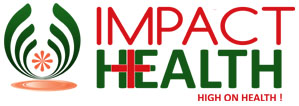5 Medical Emergencies YOU Should Know About
Medical emergencies can strike without warning, and being prepared to respond can make a crucial difference in saving lives. Awareness about common medical emergencies empowers individuals to recognize and act promptly in critical situations.

Here are five medical emergencies that everyone should be familiar with. By understanding the signs and appropriate responses to cardiac arrest, stroke, choking, anaphylaxis, and severe bleeding, you can be better equipped to provide vital aid when it matters most.
Cardiac Arrest: Cardiac arrest is a life-threatening emergency that occurs when the heart suddenly stops beating. It can result from various causes, including heart attack, arrhythmias, or electrical disturbances in the heart. Prompt recognition and immediate action are crucial in this situation. Performing cardiopulmonary resuscitation (CPR) and using an automated external defibrillator (AED) can significantly increase the chances of survival. Recognizing the signs of cardiac arrest, such as sudden collapse, loss of consciousness, and absence of pulse, and knowing how to initiate CPR can be vital in providing immediate help.
Stroke: A stroke happens when blood flow to the brain is interrupted, either due to a blockage (ischemic stroke) or bleeding (hemorrhagic stroke). The common signs of a stroke include sudden weakness or numbness on one side of the body, difficulty speaking or understanding speech, severe headache, and trouble with balance or coordination. Time is critical in stroke management, as immediate medical intervention can prevent further damage. Knowing the acronym FAST (Face drooping, Arm weakness, Speech difficulty, Time to call emergency services) can help in recognizing the signs of a stroke and seeking immediate medical attention.
Choking: Choking occurs when a foreign object blocks the airway, preventing proper breathing. It can be a life-threatening situation, especially if the person is unable to cough or breathe. If someone is choking, they may show signs of panic, clutch their throat, or be unable to speak or breathe. Knowing the Heimlich maneuver or abdominal thrusts, which involve applying pressure to the abdomen to dislodge the object, can be crucial in clearing the airway and restoring normal breathing. Immediate action should be taken, and emergency services should be contacted if the obstruction persists.
Severe Allergic Reactions (Anaphylaxis): Anaphylaxis is a severe allergic reaction that can occur rapidly after exposure to an allergen, such as certain foods, medications, or insect bites. It can cause symptoms like difficulty breathing, swelling of the face or throat, hives, dizziness, and a drop in blood pressure. Anaphylaxis requires immediate medical attention. If someone is experiencing an anaphylactic reaction, administering epinephrine through an auto-injector can help counteract the symptoms while waiting for emergency medical services.
Severe Bleeding: Severe bleeding can result from various causes, such as trauma, accidents, or medical conditions. Uncontrolled bleeding can be life-threatening if not addressed promptly. Applying direct pressure to the bleeding site using a clean cloth or bandage can help control the bleeding. Elevating the injured limb and maintaining pressure until medical help arrives is important. Knowing basic first aid techniques, including how to apply pressure and create a makeshift tourniquet if necessary, can be valuable in managing severe bleeding emergencies.
